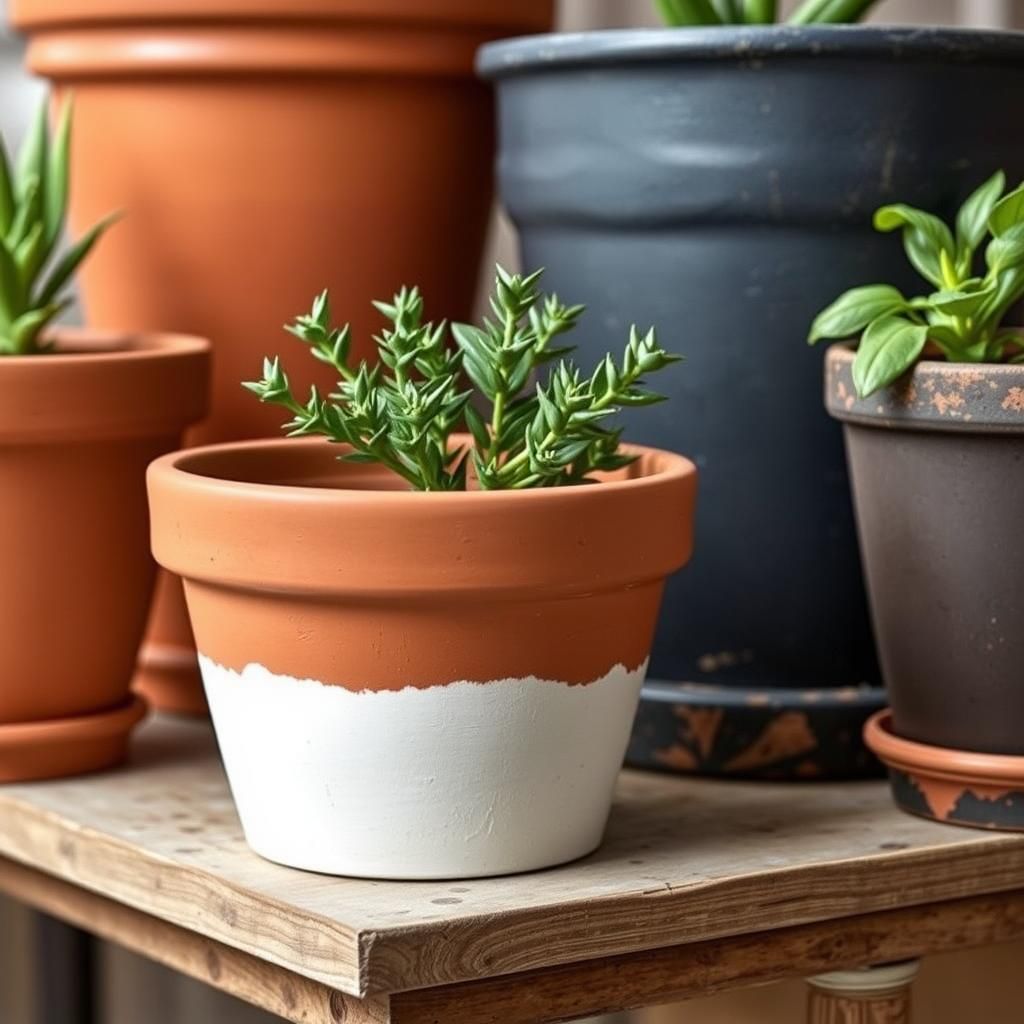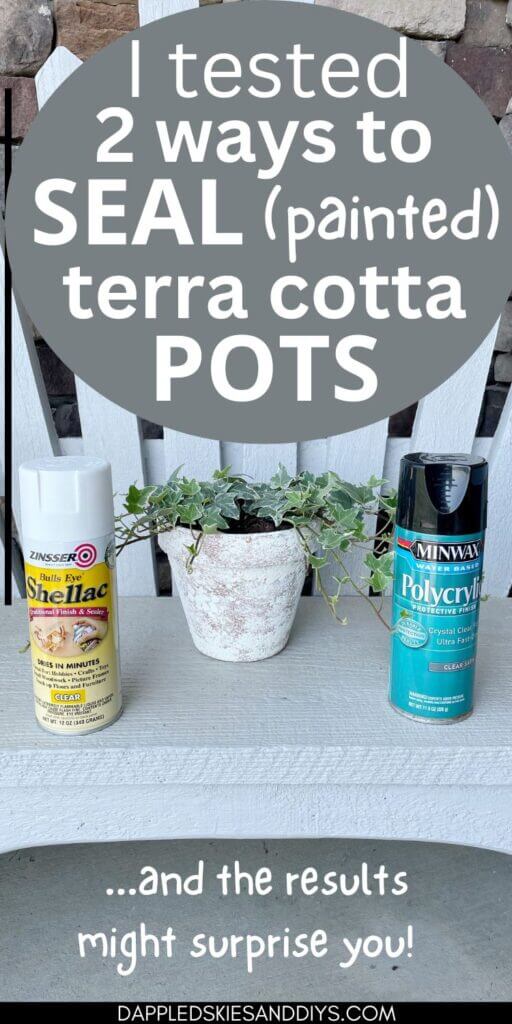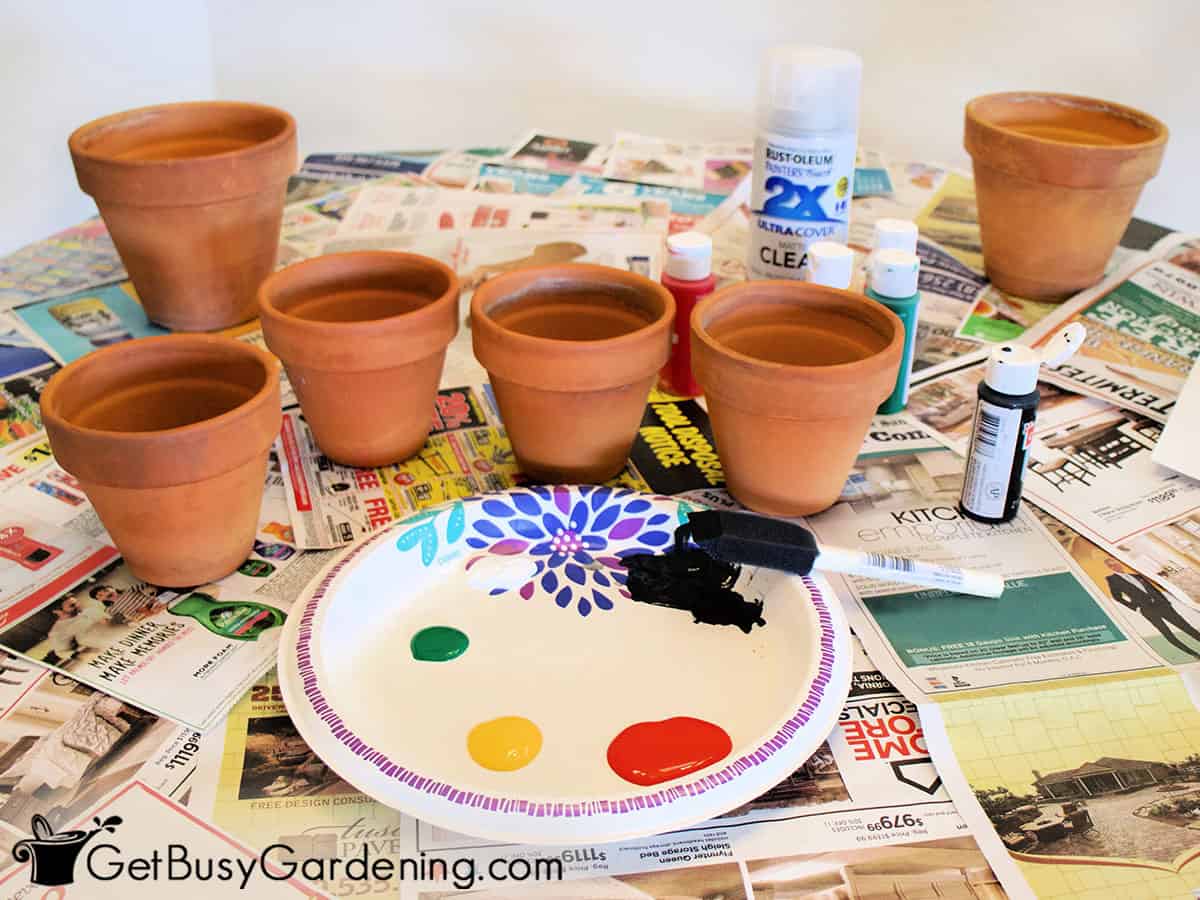The Ultimate Guide to Choosing the Best Paint for Terracotta Plant Pots

When it comes to enhancing the beauty of your garden, terracotta plant pots offer a timeless appeal. However, with exposure to the elements, they can dull over time. Choosing the right paint not only revitalizes these pots but also protects them against weather damage. This ultimate guide will walk you through the various types of paints, finishes, and techniques suitable for terracotta, ensuring your pots look vibrant while maintaining their durability. Whether you’re aiming for a rustic finish or a modern flair, this guide provides the essential tips and insights to help you make the best choice for your gardening needs.
Choosing the Right Paint for Terracotta Plant Pots
When it comes to enhancing the aesthetic appeal of your garden, painting terracotta plant pots can be a fun and creative project. The right type of paint is crucial since terracotta is a porous material that requires a paint that can adhere properly while allowing for moisture regulation. Acrylic paints are a popular choice due to their versatility, fast-drying properties, and ease of use. It's recommended to start with a layer of primer designed specifically for terracotta surfaces to ensure better adhesion and longevity of the paint. Always use non-toxic, outdoor-grade paints if you plan to keep plants in the pots, ensuring that they remain safe for both your plants and the environment.
Benefits of Painting Terracotta Pots
Painting terracotta pots not only adds aesthetic value to your garden decor but also offers protection for the pots themselves. A painted surface can help to prevent moisture absorption, reducing the risk of cracking and extending the lifespan of the pot. Additionally, using vibrant colors can make your plants stand out, creating a visually pleasing space. Furthermore, painting allows for endless customization options; you can incorporate various designs and patterns that reflect your personal style, making each pot unique.
Types of Paint Suitable for Terracotta
When selecting paint for terracotta pots, you should consider options like acrylic, latex, or chalk paint. Acrylics offer a flexible finish that can withstand outdoor conditions, while latex paints provide excellent adherence and color options. Chalk paint has a matte finish that can give a rustic charm to your pots. It’s important to ensure that any paint used is non-toxic if the pots will be used for edible plants. For best results, avoid using spray paints which may not allow the pot to breathe.
Preparing Terracotta Pots for Painting
Before painting terracotta pots, preparation is crucial to achieve a smooth and lasting finish. First, clean the pots thoroughly to remove dirt and debris, then allow them to dry completely. If the pots have any glazes or coatings, it is advisable to lightly sand the surface to improve paint adhesion. Next, apply a primer specifically formulated for terracotta; this step will help the paint adhere better and enhance color vibrancy. After the primer has dried, you can apply your chosen paint in even strokes for a professional finish.
Tips for Painting Techniques
To create stunning effects on your terracotta pots, consider trying different painting techniques like sponging, stenciling, or ombre effects. Sponging involves dabbing paint onto the surface with a sponge for a textured look, while stenciling allows you to add intricate designs easily. The ombre technique, blending colors from dark to light, can create a visually striking gradient. Remember to apply thin layers to prevent drips, and always allow each layer to dry fully before adding another for the best results.
Maintaining Painted Terracotta Pots
Once your terracotta pots are painted, maintaining their appearance requires some effort. To keep them looking fresh, avoid exposing them to extreme weather conditions for prolonged periods. Store pots indoors during harsh winters if possible, as extreme temperatures can cause paint to chip or fade. Regularly wipe down the pots with a soft, damp cloth to clean off any dirt or dust without using abrasive cleaners that could damage the paint. Additionally, consider applying a clear sealant to protect the paint and enhance durability, especially for outdoor pots.
| Paint Type | Durability | Best For |
|---|---|---|
| Acrylic | High | All-purpose, outdoor use |
| Latex | Medium | Indoor and outdoor use |
| Chalk Paint | Medium | Rustic designs, indoor use |
What kind of paint do you use on terracotta pots?

To paint terracotta pots effectively, it's essential to choose the right type of paint to ensure adhesion, durability, and safety for plants. Generally, the best options include acrylic paint, latex paint, and specialty paints designed for outdoor materials. Here’s a detailed overview of the types of paints suitable for terracotta pots.
Choosing the Right Type of Paint
When selecting paint for terracotta pots, consider factors such as porosity, environmental exposure, and plant safety. Typically, the following types are recommended:
See also:
- Acrylic Paint: Water-based and easy to use, acrylic paint adheres well to terracotta and comes in a wide variety of colors.
- Latex Paint: Similar to acrylic, latex paint provides a durable finish and is also water-based, making it a safe option.
- Specialty Paints: Look for paints specifically formulated for terracotta or outdoor surfaces, which often include protective features against UV rays and moisture.
Surface Preparation for Painting
Before applying paint, it is crucial to prepare the surface of the terracotta pots. Proper preparation can enhance adhesion and finish quality:
- Clean the Pots: Remove any dirt, grime, or sealants that may interfere with paint adhesion.
- Sand the Surface: Lightly sand the surface to create a more textured area for the paint to grip.
- Dry Completely: Ensure that the pots are completely dry before starting the painting process to prevent peeling later on.
Painting Techniques for Terracotta Pots
Different techniques can be employed to achieve a professional-looking finish when painting terracotta pots:
- Brush Painting: Use high-quality brushes for detailed work or for painting smaller areas.
- Sponge Painting: Utilize sponges for a unique textured effect or to blend colors smoothly.
- Spray Painting: An efficient method for large pots, providing an even coat quickly and reducing brush strokes.
Sealing the Paint
After painting terracotta pots, applying a sealant can protect your artwork and prolong its life:
- Traditional Sealants: Use a clear outdoor sealant that is safe for plants to maintain the vibrancy of your paint.
- Acrylic Sealers: These are water-based and provide an additional layer of protection from moisture.
- Matte or Gloss Finish: Choose between matte or glossy finishes based on your aesthetic preference.
Safety Considerations
Ensure that any paint or sealant used on terracotta pots is safe for plants. Here are some pointers:
- Non-Toxic Options: Always opt for non-toxic paints, particularly if the pots will hold edible plants.
- Low-VOC Paints: Low in volatile organic compounds, these paints are environmentally friendly and safer for indoor use.
- Test Before Full Application: Conduct a small test patch to check for any adverse reactions with your plants.
Do you need to seal terracotta pots?

Terracotta pots are a popular choice for gardening due to their porous nature and aesthetic appeal. When considering whether to seal terracotta pots, there are several factors to keep in mind.
Understanding Terracotta Porosity
Terracotta pots are made from clay that has been fired at high temperatures, making them sturdy yet porous. This porosity allows for excellent drainage, which is crucial for plant health. However, it also means that water can escape the soil more rapidly than in non-porous pots. As a result, the soil moisture level can fluctuate, and plants may require more frequent watering.
- Porous material allows for air exchange.
- Promotes drainage to prevent root rot.
- Can lead to quicker drying out of soil.
Benefits of Sealing Terracotta Pots
Sealing terracotta pots can provide several benefits, particularly in enhancing their usability in certain gardening contexts. By applying a sealant, you can minimize water loss, which may be particularly advantageous in hot or arid climates.
- Slows down the evaporation of moisture from the soil.
- Reduces the stain from minerals and salts that may leach through.
- Increases the lifespan of the pot by preventing cracking.
Types of Sealants
When choosing a sealant for terracotta pots, it’s essential to select the right type to ensure both safety for plants and durability. Sealants come in various forms, including water-based, oil-based, and spray-on varieties.
- Water-based sealants are plant-safe and easy to apply.
- Oil-based sealants provide a more durable finish but may not be suitable for all plants.
- Spray-on sealants offer even coverage, but application should be done carefully to avoid overspray on soil.
Application Process
Applying a sealant to terracotta pots requires a few steps to achieve the best results. It's important to prepare the pot properly and apply the sealant evenly to ensure effectiveness and longevity.
See also:
- Clean the pot thoroughly to remove dirt and residues.
- Allow the pot to dry completely before applying the sealant.
- Apply the sealant in a well-ventilated area, following the manufacturer's instructions for drying times.
Considerations for Sealing
Before sealing your terracotta pots, consider several factors to determine if it's the right choice for your gardening needs. Understanding the climate, plant types, and pot usage will help make the best decision.
- Consider the environment; hotter climates may benefit from sealing.
- Evaluate plant species; some roots prefer the porous nature of unsealed pots.
- Think about pot use; decorative pots may require sealing for aesthetics.
How long does it take for acrylic paint to dry on terracotta?

Acrylic paint typically takes about 1 to 2 hours to dry on terracotta. However, the drying time can vary based on several factors such as the thickness of the paint application, humidity levels, temperature, and ventilation. It's important to note that while the surface may feel dry to the touch after this period, the paint may not be fully cured, which can take up to 24 hours or more depending on the aforementioned variables.
Factors Affecting Drying Time
Several factors can significantly impact the drying time of acrylic paint on terracotta. Understanding these elements can help you anticipate the drying process more accurately.
- Humidity: High humidity levels can prolong the drying time of acrylic paint. Moisture in the air slows down the evaporation process.
- Temperature: Warmer temperatures generally accelerate drying times, while colder environments can extend them.
- Paint Thickness: A thicker layer of paint will take longer to dry compared to a thin layer, as there is more moisture to evaporate.
Best Practices for Painting on Terracotta
To ensure optimal results when applying acrylic paint on terracotta, consider the following best practices.
- Preparation: Clean the terracotta surface thoroughly before painting to remove dust or oils, which can affect adhesion.
- Use a Primer: Applying a primer designed for terracotta can improve paint adhesion and reduce drying times.
- Thin Layers: Apply acrylic paint in thin layers rather than one thick coat to facilitate faster drying.
How to Test Dryness
To check if your acrylic paint is dry on terracotta, you can perform simple tests that indicate whether it is safe to proceed.
- Touch Test: Lightly touch the painted surface with your fingertip; it should feel dry and not tacky.
- Checklist Method: Use a soft cloth to gently rub the painted area. If no paint comes off, it is likely dry.
- Wait Time: Wait a designated period (at least 2 hours) before assuming the paint is fully dry to ensure the best results.
Environmental Considerations
The environment in which you are painting plays a crucial role in how quickly acrylic paint will dry on terracotta. Different conditions have varying effects.
- Indoor vs Outdoor: Indoor conditions typically allow for more controlled humidity and temperature, promoting faster drying.
- Ventilation: Good air circulation helps to evaporate moisture quickly, aiding in faster drying.
- Seasons: Seasonal changes can affect both humidity and temperature, so expect variations in drying times throughout the year.
Curing vs. Drying
It's important to differentiate between the terms curing and drying when discussing acrylic paint application on terracotta.
- Drying: This refers to the time it takes for the paint to feel dry to the touch, often within the first few hours.
- Curing: Curing is the process that happens after drying, where the paint fully hardens and adheres to the surface. This can take several days.
- Importance of Curing: Proper curing ensures the durability and longevity of the paint job, making it crucial not to rush the process.
Questions from Our Readers
What type of paint is best for terracotta plant pots?
To ensure optimal adhesion and durability, it is recommended to use acrylic paint or specialized outdoor paint for terracotta pots. These types of paint are designed to withstand weather conditions and are less likely to chip or fade over time. Always check that the paint is non-toxic if you're using the pots for edible plants.
Do I need to seal the paint on terracotta pots?
Yes, sealing the paint is critical for prolonging the lifespan of your design. A clear protective sealant will create a barrier against moisture and UV rays, preventing the paint from peeling and helping to maintain its vibrancy. Be sure to use a sealant that is also non-toxic if you're concerned about your plants.
See also:
How do I prepare terracotta pots for painting?
Preparation involves several steps: first, clean the pots thoroughly to remove dust and debris. Next, if the terracotta is unglazed, sand the surface lightly to improve paint adhesion. Finally, ensure that the pots are completely dry before applying any paint.
Can I use regular craft paint on terracotta pots?
While you can use regular craft paint, it is not the best choice for outdoor use as it may not hold up well against moisture and sunlight. Outdoor-safe acrylic paints or paints specifically made for ceramics are recommended for better durability and to ensure your painted pots last through various seasons.

If you want to read more articles like The Ultimate Guide to Choosing the Best Paint for Terracotta Plant Pots, we recommend you check out our Pots category.
Leave a Reply
Related Articles